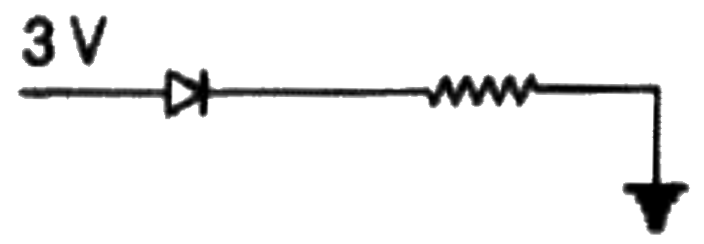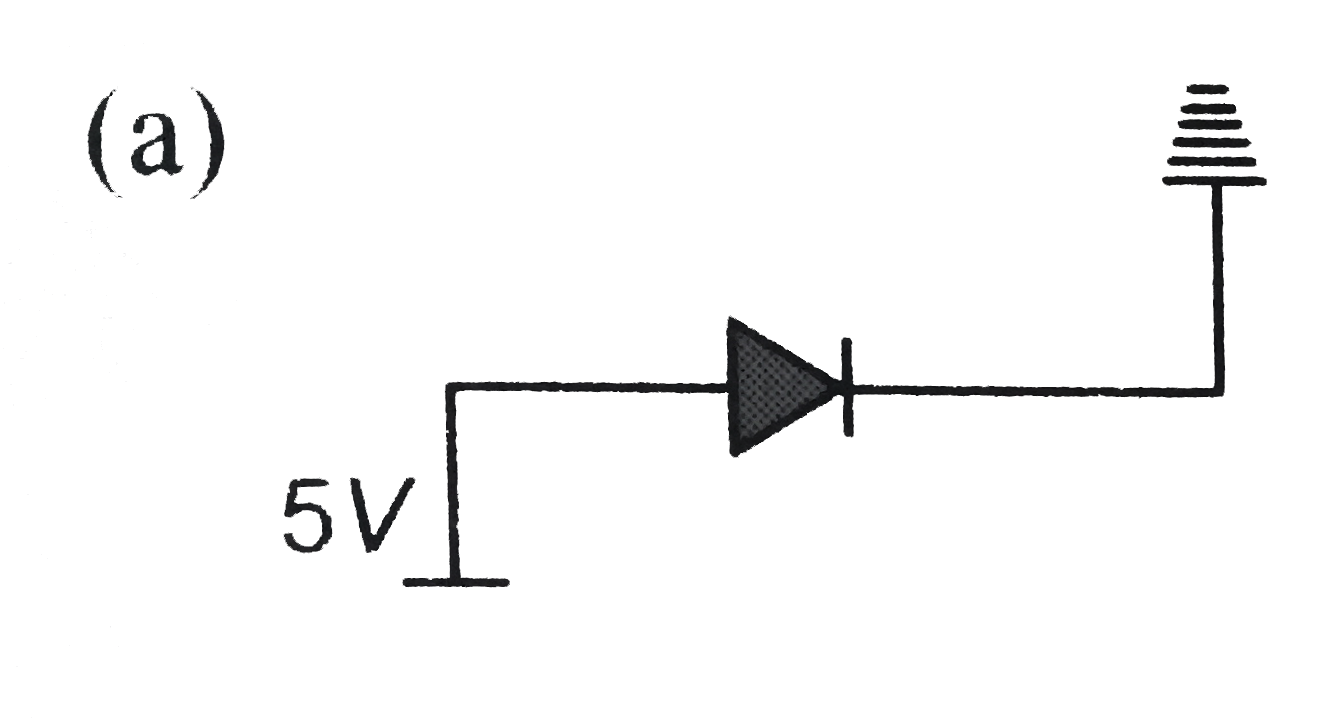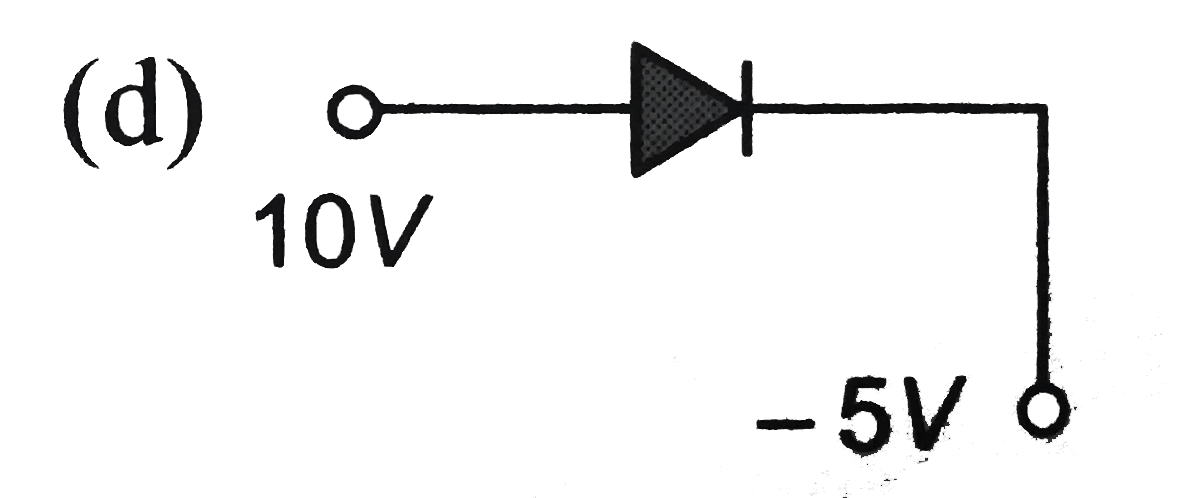A reverse biased diode is




The correct Answer is:A
To determine which diode is reverse biased, we need to analyze the potential of the P-side and N-side of each diode. A diode is reverse biased when the potential of the N-side is greater than the potential of the P-side.
1. Identify the P-side and N-side:
- In a diode, the P-side is the side where holes are the majority carriers, and the N-side is where electrons are the majority carriers.
2. Check the potentials for each option:
- Option 1: P-side = -6V, N-side = -3V
- Here, the potential of the N-side (-3V) is greater than the potential of the P-side (-6V). Thus, this diode is reverse biased.
- Option 2: P-side = 3V, N-side = 0V
- In this case, the potential of the P-side (3V) is greater than the N-side (0V). Therefore, this diode is forward biased.
- Option 3: P-side = 0V, N-side = -2V
- Here, the potential of the P-side (0V) is greater than the N-side (-2V). Thus, this diode is also forward biased.
- Option 4: P-side = 2V, N-side = 2V
- In this case, both sides have equal potential (2V). Since neither side is greater, this diode is neither forward nor reverse biased.
3. Conclusion:
- The only diode that is reverse biased is Option 1.
Final Answer:
The reverse biased diode is Option 1.
- In a diode, the P-side is the side where holes are the majority carriers, and the N-side is where electrons are the majority carriers.
- Option 1: P-side = -6V, N-side = -3V
- Here, the potential of the N-side (-3V) is greater than the potential of the P-side (-6V). Thus, this diode is reverse biased.
- Option 2: P-side = 3V, N-side = 0V
- In this case, the potential of the P-side (3V) is greater than the N-side (0V). Therefore, this diode is forward biased.
- Option 3: P-side = 0V, N-side = -2V
- Here, the potential of the P-side (0V) is greater than the N-side (-2V). Thus, this diode is also forward biased.
- Option 4: P-side = 2V, N-side = 2V
- In this case, both sides have equal potential (2V). Since neither side is greater, this diode is neither forward nor reverse biased.
- The only diode that is reverse biased is Option 1.
The reverse biased diode is Option 1.
Topper's Solved these Questions
Similar Questions
Knowledge Check
In the following, reverse biased diode is.
A B
B C
C D
D
Which of the following is reverse biased diode?
A B
B C
C D
D
In a reverse biased diode, when the applied voltage changes by 1V, the current is found to change by 0.5μA. The reversebiase resistance of the diode is
A2×105ΩB2×106ΩC200ΩD2Ω
Assertion: In reverse biased condition a p-n junction diode does not conduct.
Reason: In reverse biased condition a diode has zero resistance.
View SolutionIn a reverse biased diode, when the applied voltage changes by 1V, the current is found to change by 0.5μA. The reversebiase resistance of the diode is
View SolutionA forward biased diode is
View SolutionA forward biased diode is
View SolutionAssertion (A): During reverse, biasing a diode doesn't conduct current.
Reason (R) : It narrows the depletion layer.
View Solution
